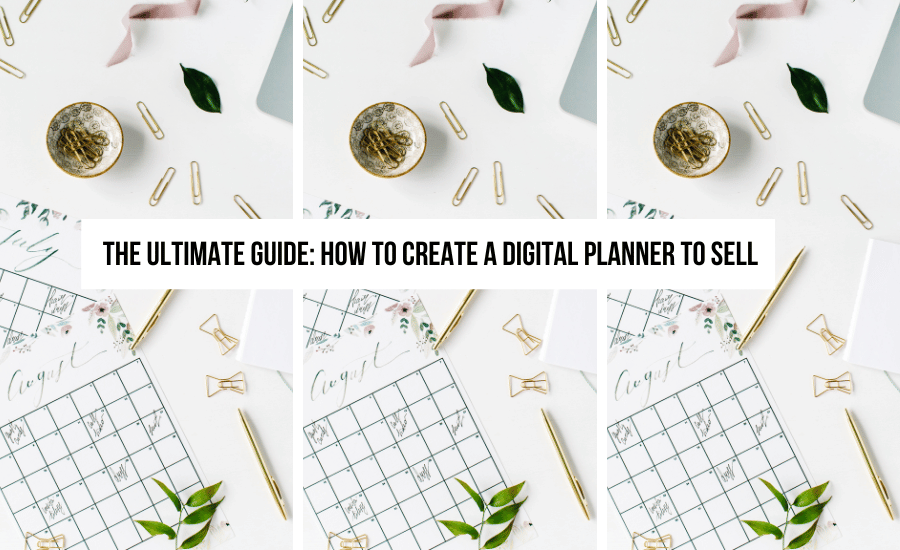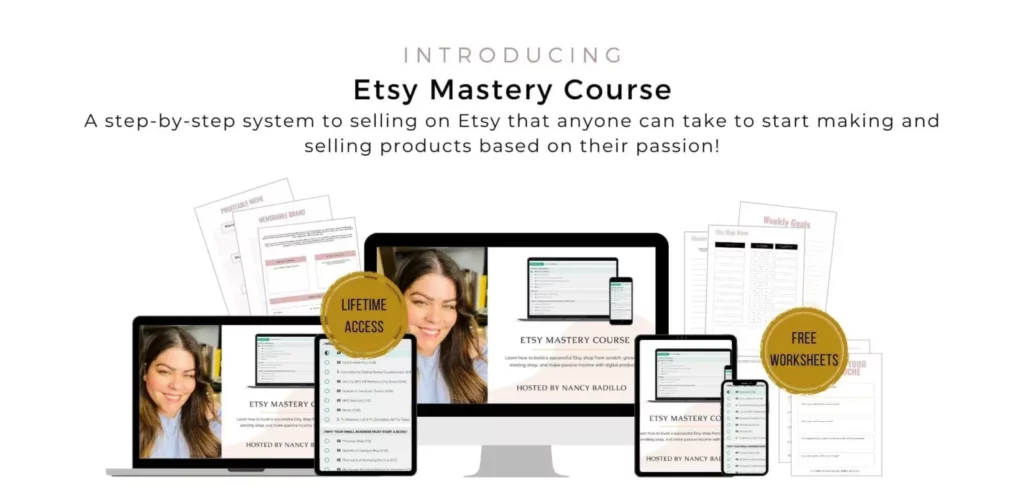Are you looking to turn your passion for planning into a profitable online business? Look no further than creating and selling digital planners. With the rise in digital organization and the increasing demand for customizable planning tools, there has never been a better time to capitalize on this market. In this digital age, people are seeking convenience and flexibility in their planning routines, and a digital planner offers just that. Let’s dive into how to create a digital planner to sell.
Whether you are a seasoned planner or a creative entrepreneur looking to diversify your product offerings, this guide will walk you through the process of creating and selling a digital planner that not only meets the needs of your target audience but also stands out in a crowded marketplace. From design tips to pricing strategies, we’ll cover everything you need to know to create a digital planner that will not only help your customers stay organized but also drive revenue for your business. So let’s get started on this exciting journey to digital planner success!

This blog post is all about how to create a digital planner to sell.
Home > Etsy Biz > How To Create A Digital Planner To Sell
DISCLOSURE: This is a sponsored post. Through my links, I may receive a commission if you decide to make purchases at no cost for yourself! Check out our disclaimer for more info on how it works
Ready to embark on your Etsy business journey but unsure where to begin? Join our free masterclass, where we empower you to start, manage, and scale your Etsy business into a full-time income. With our guidance, 9,000+ individuals have found success, even without a social media presence or email list. Step into the world of Etsy entrepreneurship, and let us guide you to success. Join us now!
Table of contents
- Benefits of Selling Digital Planners
- Understanding Your Target Audience
- Planning Your Digital Planner
- Designing Your Digital Planner
- Choosing the Right Platform to Sell Your Digital Planner
- Pricing Your Digital Planner
- Marketing and Promoting Your Digital Planner
- Providing Customer Support for Your Digital Planner
- Conclusion: How To Create A Digital Planner To Sell
- Ready To Start Selling?
- What To Read Next?
Benefits of Selling Digital Planners
Digital planners offer numerous benefits that make them an attractive option for both sellers and buyers. As a seller, creating and selling digital planners can be a lucrative business opportunity. The low overhead costs and the ability to reach a global audience make it an appealing venture. Additionally, digital planners can be easily updated and customized, allowing you to offer a wide range of designs and functionalities to cater to different customer preferences.
For buyers, digital planners offer the convenience of being accessible on various devices, including smartphones, tablets, and computers. This accessibility allows users to have their planners at their fingertips wherever they go. Digital planners also eliminate the need for physical storage space and the hassle of carrying around multiple notebooks. With the ability to sync data across devices and integrate with other productivity tools, digital planners provide a seamless planning experience.
In conclusion, selling digital planners can be a profitable business venture due to the low overhead costs and global reach it offers. Buyers also benefit from the convenience and flexibility that digital planners provide. By understanding the advantages of digital planners, you are well on your way to creating a product that will attract customers and generate revenue. Let’s dive into how to make digital planners to sell.
Understanding Your Target Audience
Before diving into the creation process, it’s crucial to understand your target audience. Identifying who your ideal customers are will help you tailor your digital planner to meet their specific needs and preferences. Conducting market research and creating buyer personas can provide valuable insights into the demographic, psychographic, and behavioral characteristics of your target audience.
Start by defining the age range, gender, occupation, and interests of your target audience. Consider their pain points and challenges when it comes to planning and organization. Are they students looking for an academic planner or professionals in need of a business-focused planner? Understanding their goals and motivations will enable you to create a digital planner that resonates with them.
Once you have a clear understanding of your target audience, use this knowledge to inform your design choices, feature selection, and marketing strategies. By tailoring your digital planner to your target audience, you increase the chances of attracting and retaining customers this will help with how to create a digital planner to sell.
Planning Your Digital Planner
Planning is a crucial step in creating a digital planner that stands out in the market. Start by defining the purpose and scope of your digital planner. Will it be a general planner that covers various aspects of life, or will it cater to a specific niche? Understanding the purpose of your planner will help you define its structure and features.
Next, create a content outline for your digital planner. Determine the sections and pages you want to include, such as monthly calendars, weekly spreads, goal-setting pages, and note-taking sections. Consider the layout and organization of these elements to ensure a user-friendly experience.
When planning your digital planner, it’s essential to strike a balance between simplicity and functionality. While it’s tempting to include numerous features, remember that a cluttered and overwhelming design can deter users. Focus on providing the essential tools and features that align with your target audience’s needs.
Designing Your Digital Planner
The design of your digital planner plays a significant role in attracting and engaging customers. A visually appealing and user-friendly design will make your planner stand out in a crowded marketplace. When designing your digital planner, consider the following tips:
1. Choose a cohesive color scheme: Select colors that reflect your brand and create a harmonious visual experience. Avoid using too many colors that can be distracting or overwhelming.
2. Use legible fonts: Opt for easy-to-read fonts that are visually pleasing. Consider the readability of your chosen fonts across different devices.
3. Include interactive elements: Take advantage of the digital medium by incorporating interactive elements like clickable tabs, hyperlinks, and dropdown menus. These features enhance the user experience and make navigation more intuitive.
4. Offer customization options: Allow users to personalize their digital planners by providing options to change colors, add stickers or images, and customize layouts. This customization adds value to your product and increases customer satisfaction.
Remember to test your design across various devices and platforms to ensure compatibility and a consistent experience. Solicit feedback from potential customers or conduct user testing to identify areas for improvement.
Choosing the Right Platform to Sell Your Digital Planner
Selecting the right platform to sell your digital planner is crucial for reaching your target audience and maximizing sales. Consider the following factors when choosing a platform:
1. E-commerce platforms: Platforms like Etsy, Shopify, and Gumroad offer a user-friendly interface and built-in marketing tools. They also have a large user base, increasing your chances of attracting customers.
2. Personal website: Creating a dedicated website for your digital planner gives you full control over branding, customization, and pricing. However, it requires more effort in terms of website design, maintenance, and marketing.
3. Social media platforms: Utilize social media platforms like Instagram, Facebook, and Pinterest to showcase your digital planner and engage with potential customers. These platforms can drive traffic to your chosen selling platform or website.
Consider the fees, features, and support offered by each platform before making a decision. It’s also beneficial to research successful digital planner sellers and observe their platform choices and strategies.
Pricing Your Digital Planner
Setting the right price for your digital planner is crucial for attracting customers and generating revenue. Consider these factors when determining the pricing:
1. Market research: Research the prices of similar digital planners in the market to gain insights into the price range. Consider the value you offer compared to your competitors and adjust your pricing accordingly.
2. Cost analysis: Calculate the costs involved in creating and selling your digital planner, including design software, marketing expenses, and platform fees. Ensure that your pricing covers these costs while still allowing for a reasonable profit margin.
3. Value-based pricing: Consider the unique features, customization options, and user experience your digital planner provides. Price your product based on the value it offers to customers.
4. Promotional pricing: Consider offering introductory discounts or limited-time promotions to attract new customers and generate buzz around your digital planner.
Regularly evaluate your pricing strategy and make adjustments based on market trends and customer feedback. Offering different pricing tiers or bundles can also cater to different customer segments and increase sales.
Marketing and Promoting Your Digital Planner
Creating a stellar digital planner is only half the battle; marketing and promotion are essential for reaching your target audience and driving sales. Consider the following strategies to effectively market and promote your digital planner:
1. Social media marketing: Establish a strong presence on relevant social media platforms and engage with your target audience. Share visually appealing content, offer planning tips, and showcase customer testimonials.
2. Influencer collaborations: Collaborate with influencers or bloggers in your niche to reach a wider audience. Offer them free access to your digital planner in exchange for honest reviews or social media promotions.
3. Content marketing: Create valuable content related to planning, organization, and productivity to establish yourself as an authority in the field. Write blog articles, create videos, or host webinars to share your expertise and promote your digital planner.
4. Email marketing: Build an email list of interested prospects and regularly communicate with them. Offer exclusive discounts, freebies, or valuable planning resources to incentivize sign-ups and drive conversions.
5. Collaborations and partnerships: Partner with complementary businesses or brands to cross-promote each other’s products. This can expand your reach and introduce your digital planner to new audiences.
Remember to track the effectiveness of your marketing efforts through analytics and adjust your strategies accordingly. Consistent and targeted marketing efforts will help build brand awareness and drive sales for your digital planner.
Providing Customer Support for Your Digital Planner
Offering excellent customer support is essential for maintaining customer satisfaction and building a loyal customer base. Consider the following tips for providing top-notch customer support:
1. Clear instructions: Provide detailed instructions on how to download, install, and use your digital planner. Include step-by-step guides, video tutorials, or FAQs to address common questions and concerns.
2. Prompt communication: Respond to customer inquiries, feedback, and support requests in a timely manner. This demonstrates your commitment to customer satisfaction and builds trust.
3. Regular updates: Continuously improve your digital planner based on customer feedback and market trends. Regularly release updates or new features to keep customers engaged and satisfied.
4. Community engagement: Create a community or forum for digital planner users to connect, share tips, and provide support. This fosters a sense of belonging and encourages user engagement.
By prioritizing customer support, you can enhance the overall user experience, foster customer loyalty, and generate positive word-of-mouth recommendations.
Conclusion: How To Create A Digital Planner To Sell
Creating and selling a digital planner can be a rewarding and profitable venture. By understanding your target audience, planning your digital planner effectively, designing it with user experience in mind, choosing the right platform, pricing it competitively, marketing it strategically, and providing excellent customer support, you can create a digital planner that meets the needs of your customers and drives revenue for your business. Remember to stay informed about industry trends, continuously improve your product, and stay engaged with your target audience to ensure long-term success in the digital planner market. So, embrace the digital planning revolution and take the first step towards creating a successful digital planner business today! This blog post was all about how to create a digital planner to sell.
Ready To Start Selling?
If you’re considering starting your own Etsy store but unsure about which products to offer, my signature course, the Etsy Mastery Course, is your ultimate guide. Learn how to start, manage, and scale your Etsy business to a full-time income.

What To Read Next?
- 300+ Etsy Store Name Ideas & A Step-by-Step Guide to Picking the Perfect One (That You Can Trademark!)
- 15 Creative Ideas to Make Your Etsy Packaging Stand Out!
- Understanding Essential Requirements Before Starting Your Business: A Comprehensive Guide
- Trends on Etsy: What’s Hot and How to Find the Best-Selling Products
- Most Popular Etsy Product Categories
- Ultimate Review of the eRank Free vs Pro Plans

+ show Comments
- Hide Comments
add a comment